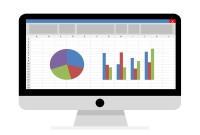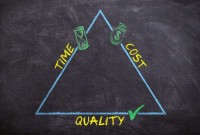- Home
- Business Processes
- Industry Knowledge
- Aerospace Industry
- Automotive Industry
- Banking Domain
- BFSI Industry
- Consumer/ FMCG Industry
- Chemicals Industry
- Engineering & Construction
- Energy Industry
- Education Domain
- Finance Domain
- Hospitality Domain
- Healthcare Industry
- Insurance Domain
- Retail Industry
- Travel and Tourism Domain
- Telecom Industry
- Leadership Skills
- eLearning
- Home
- Functional
- General Ledger (Record to Report)
- Prepayments and Prepaid Expenses
Prepayments and Prepaid Expenses
Prepayments are the payment of a bill, operating expense, or non-operating expense that settle an account before it becomes due. Learn the concept of prepaid expenses. Understand the accounting treatment for prepaid expenses. Understand the concept by looking at some practical examples and finally learn the adjusting entry for these expenses.
What are Prepaid Expenses?
Prepaid expenses, sometimes referred to as deferred expenses, are the amounts that have been paid in advance to a vendor or creditor for goods and services. These payments initially get recorded as assets but are expected to become expenses over time or through the normal operations of the business. Supplies, prepaid insurance, prepaid advertising, advance rental, advance tuition fee, and prepaid interest are some examples of prepaid expenses that may require adjustment at the end of an accounting period.
What is the accounting treatment for prepaid expenses?
Prepaid Expenses are the expenses that are paid before the time period in which the benefit will be consumed. The payment is a current asset on the balance sheet and this amount paid is then amortized, as the consumption or utilization happens by charging proportionate amounts to expense accounts. Because the advance payments are to obtain benefits for the organization over a period of time, the cost of these assets is charged against profits throughout the period, usually on a monthly basis. Prepaid expenses are treated as current assets because the company has paid for something and someone owes services or goods in exchange in the future.
Although the prepaid expenses are generally classified as Current Assets in the balance sheet, however, it’s an unusual classification as prepaid expenses will never, except in rare cases, be turned into cash in the practical world. Prepaid expenses are expenses that have been paid in advance and therefore won't have to be paid again, in a way they create cash by enabling the company to avoid paying out towards the expense for the benefit period.
What are some examples of Prepaid Expenses?
Every business buys insurance of various kinds to manage and mitigate risk and to buy insurance the organization needs to pay the premium to the insurance company, which is generally paid in advance, typically for a year at a time, and covers the organization for specified risks for the policy period. For some businesses, insurance can be a very costly item. The policy cover may extend many accounting periods and hence companies allocate the cost of that protection over the period of time that is being protected, based on the allocation per accounting period. Proper accounting treatment, matching, and accrual concepts demand that the premium benefits all 12 months and should therefore be charged to profits over the benefit period, not just the month in which you paid the premium.
So, if the company has defined its accounting period as a calendar month and the policy period is for 12 months, then the company will charge the insurance amount to expense over the 12 months that it protects, usually by simply charging 1/12 of the total to expense each month. The balance of the advance premium payment is considered prepaid and it rests in a prepaid expense account until it has been entirely written off to expense. Other examples of prepaid expenses might be property taxes, advance rentals, or advance income tax installments.
Adjusting Entry for Prepaid Expenses:
Prepaid expenses (or deferred expenses) are expenses paid in cash and recorded as assets prior to being used. The most common form of an adjusting entry for prepaid expenses would be to create a current asset at the time of payment for the expense and charge it to the expense account over the accounting periods for which the benefit will be in place. These types of adjusting entries are usually permanent.
In the case of prepaid expenses, there is a timing difference between the cash-flow and the actual charge to the expense spread over the period of coverage of the advance. In case these cash-flows are not matched to the accounting periods in which the expenses will actually happen, it will adversely affect the profits of the period in which the cash flow has been recorded. Therefore prepaid expenses are treated as assets to reflect the true state of affairs for the current accounting period.
Many business managers often overlook these timing differences because they think that the effects will equal and compensate each other over time. But such differences can be very significant in the short term and can impact the critical cash flow planning.
Prepayment accounting entries:
Given below is a set of accounting entries that generally take place in automated systems and ERPs:
Step 1: Raise a Prepayment Invoice
Debit: Prepaid Expense A/c
Credit: Liability A/c
(Example: Performa invoice of the total insurance period for the year has been received and the company has decided to purchase the policy)
Step 2: Prepayment is release to the vendor:
Debit: Liability A/c
Credit: Bank/cash A/c
(Example: The payment has been released to the vendor)
Step 3: When the Invoice is raised for Expense:
Debit: Expense Charge A/c
Credit: Prepaid Expense A/c
(Example: During the accounting period one, the charge for the expense is made and prepaid expense is reduced by the same amount)
Related Links
You May Also Like
-
Concept of Representative Office
A representative office is the easiest option for a company planning to start its operations in a foreign country. The company need not incorporate a separate legal entity nor trigger corporate income tax, as long as the activities are limited in nature.
-
GL - Different Type of Journals
Two basic types of journals exist: general and special. In this article, the learner will understand the meaning of journalizing and the steps required to create a journal entry. This article will also discuss the types of journals and will help you understand general journals & special journals. In the end, we will explain the impact of automated ERPs on the Journalizing Process.
-
Network Organizational Structures
The newest, and most divergent, team structure is commonly known as a Network Structure (also called "lean" structure) has central, core functions that operate the strategic business. It outsources or subcontracts non-core functions. When an organization needs to control other organizations or agencies whose participation is essential to the success, a network structure is organized.
-
GL - Unearned / Deferred Revenue
Unearned revenue is a liability to the entity until the revenue is earned. Learn the concept of unearned revenue, also known as deferred revenue. Gain an understanding of business scenarios in which organizations need to park their receipts as unearned. Look at some real-life examples and understand the accounting treatment for unearned revenue. Finally, look at how the concept is treated in the ERPs or automated systems.
-
Functional Organizational Structures
A functional organizational structure is a structure that consists of activities such as coordination, supervision and task allocation. The organizational structure determines how the organization performs or operates. The term organizational structure refers to how the people in an organization are grouped and to whom they report.
-
Horizontal or Flat Organizational Structures
Flat organizational structure is an organizational model with relatively few or no levels of middle management between the executives and the frontline employees. Its goal is to have as little hierarchy as possible between management and staff level employees. In a flat organizational structure, employees have increased involvement in the decision-making process.
-
A legal entity is an artificial person having separate legal standing in the eyes of law. A Legal entity represents a legal company for which you prepare fiscal or tax reports. A legal entity is any company or organization that has legal rights and responsibilities, including tax filings.
-
Reversing Journals are special journals that are automatically reversed after a specified date. A reversing entry is a journal entry to “undo” an adjusting entry. When you create a reversing journal entry it nullifies the accounting impact of the original entry. Reversing entries make it easier to record subsequent transactions by eliminating the need for certain compound entries. See an example of reversing journal entry!
-
What Is a General Ledger? General Ledger (also known in accounting as the GL or the Nominal Ledger) is at the heart of any accounting system. A general ledger is the master set of accounts that summarize all transactions occurring within an entity. Ledger is the skillful grouping and presentation of the Journal entries. Learn the accounting fundamentals, general ledger process, and general ledger flow.
-
Although technically a general ledger appears to be fairly simple compared to other processes, in large organizations, the general ledger has to provide many functionalities and it becomes considerably large and complex. Modern business organizations are complex, run multiple products and service lines, leveraging a large number of registered legal entities, and have varied reporting needs.
Explore Our Free Training Articles or
Sign Up to Start With Our eLearning Courses

About Us
Learning
© 2023 TechnoFunc, All Rights Reserved










